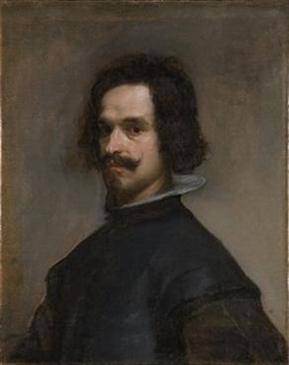
Velázquez – Portrait of a man
Painting in Metropolitan Museum’s collection reattributed to Spanish master Velázquez
Thomas P. Campbell, Director of The Metropolitan Museum of Art, announced today that a technical examination and cleaning of one of its paintings, formerly ascribed to the workshop of Velázquez, has revealed an autograph work by the great 17th-century Spanish master himself
]]>
Velázquez is among the most admired Old Master painters, and his work rarely enters the market. The rehabilitation of this picture thus represents a major “new” acquisition for the Museum, which possesses the finest collection of works by the master in America.
“This reattribution to Velázquez of a work that has been in the Metropolitan Museum’s collection for decades is the result of the fine collaborative work of two of the Museum’s renowned experts: Keith Christiansen, the newly named John Pope-Hennessy Chairman of European Paintings, and Michael Gallagher, the Sherman Fairchild Conservator in Charge of Paintings Conservation. It highlights the depth of the Museum’s collection as well as the acumen of its superb curatorial and conservation staff.”
The painting shows a man in his mid-thirties, bust length, wearing a black doublet with a stiff white collar, posed in three-quarter view. It is a study from life rather than a finished work. Many areas are in a simple, sketched-in state, with passages left abbreviated in terms of form and finish. The shadowed side of the torso is indicated with long free strokes of black paint that have an intentionally “broken” quality where they have been dragged over the canvas weave. Although the picture has suffered from abrasion, its quality of directness and immediacy is undiminished.
The picture entered the collection in 1949 as part of the bequest of Jules Bache, who headed one of the most successful brokerage firms in the country before the Second World War, and who was an art collector of great distinction as well as one of the major benefactors of The Metropolitan Museum of Art. Acquired sometime before 1811 by Johann Ludwig Reichsgraf von Wallmoden-Gimborn (the illegitimate son of George II of Great Britain) and later in the collection of George V, King of Hannover, Duke of Brunswick-Lüneburg, Duke of Cumberland (1857–d. 1878), the picture was acquired by Bache from the famous dealer Duveen in 1926. At the time, it was considered by a leading specialist as a self-portrait of Velázquez, and as such it entered the Museum. However, more recent scholarship has had a less favorable view of the picture. In the standard 1963 monograph on the artist by José López-Rey, it is described as a “school piece rather close to Velázquez’s manner.” In 1979, the Museum demoted the attribution to the workshop of Velázquez. What was not realized was the degree to which unnecessarily heavy retouching and a thick, discolored varnish obfuscated the qualities of the picture, making a proper evaluation impossible.
In conjunction with an ongoing project to catalogue the Spanish paintings in the collection, this summer the picture was examined closely. A test cleaning suggested that beneath the yellowed varnish was a work painted in a pale, light-filled palette. Complete removal of the varnish and of the extensive retouching done in a previous restoration revealed a work of astonishing freshness, with all of the hallmarks of Velázquez’s sure touch of the brush.
Jonathan Brown, the author of the authoritative monograph in English on the artist and a professor at the Institute of Fine Arts, was asked to examine the newly cleaned picture. He concurred that the work was, indeed, by the artist – most likely an informal, rapidly painted study, with the head more highly finished than the costume and background, which is a thinly painted gray over a warm pinkish-buff ground. Professor Brown will write an article on the picture, re-introducing it to the scholarly literature.
Scholars have long remarked on the resemblance of the sitter in the Metropolitan Museum’s painting to a bystander who appears at the far right of Velázquez’s great masterpiece, The Surrender of Breda, painted in 1634-35 to commemorate the Spanish victory over the Dutch (Museo del Prado, Madrid). Because of its placement at the edge of the composition, looking out at the viewer, that figure has sometimes been thought to be a self-portrait, whence the idea that the Metropolitan’s painting is also a self-portrait – a study for inclusion in that picture and therefore dating from the same moment, when the artist would have been 35. The matter remains highly speculative. There is no consensus who the figure in the Surrender of Breda actually shows; other depictions of Velázquez – most famously his inclusion of himself in his most celebrated masterpiece, Las Meninas – are all much later in date (Velázquez was 57 when he painted La Meninas). The identification of the sitter will doubtless be much discussed by scholars, but the attribution of the Metropolitan’s painting to Velázquez seems now beyond question.
The Museum plans to display the picture together with information relating to its provenance, attribution history, and cleaning.
Follow us on:
